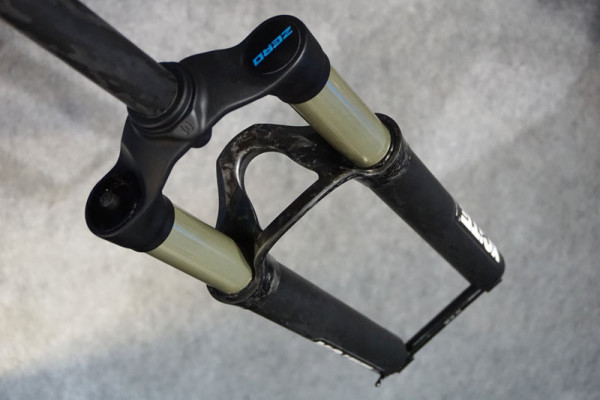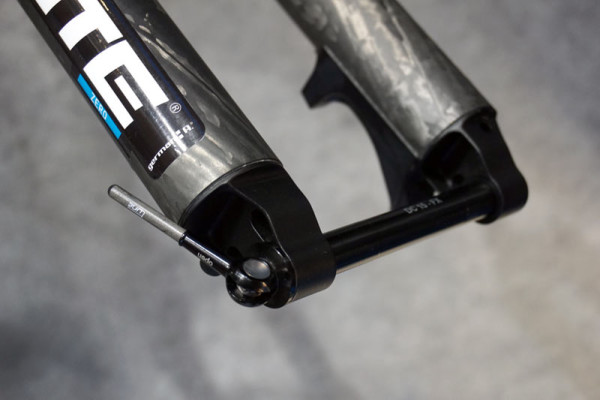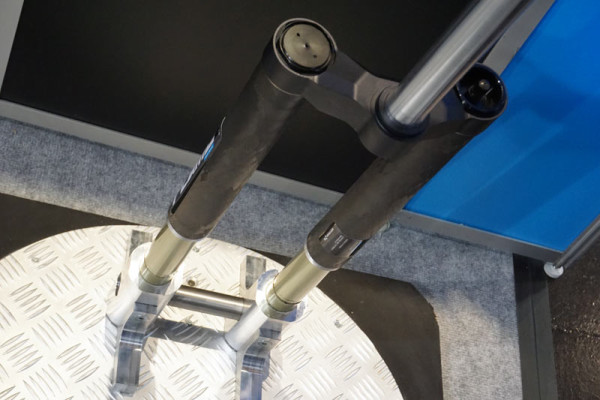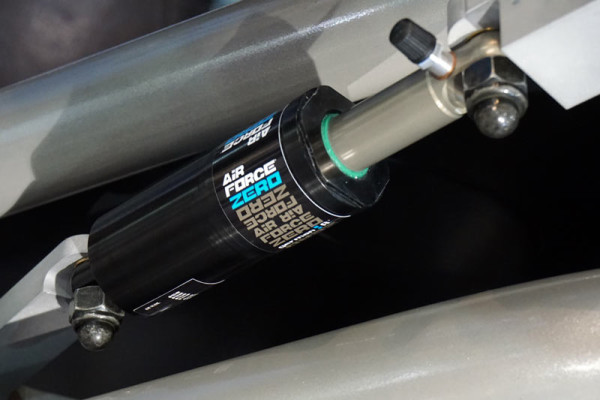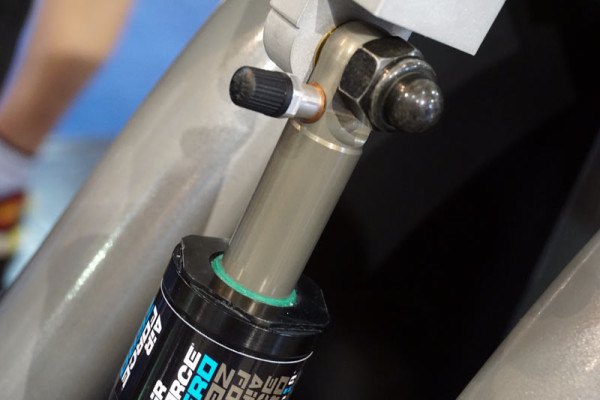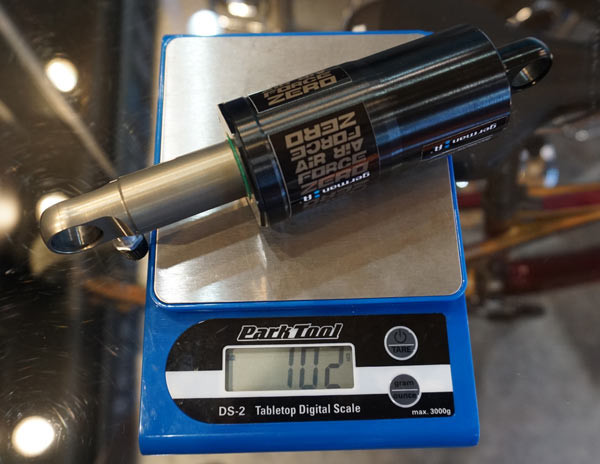German:A is no stranger to lightweight forks, having offered the linkage driven Kilo model for years. But the new Zero-series forks and shocks take it to a whole ‘nother level by getting traditional lowers and stanchions into a package that’s under 1kg.
The new Xcite Zero comes in as light as 988g and is the lightest traditional suspension fork available. Lauf’s leaf spring forks still come in a bit lighter in some configurations, but German:A manages to do it with more travel and adaptive damping…
Much of the weight savings comes from a full carbon lower and crown/steerer, save for the alloy bearing race. they build the taper into the race rather than the steerer tube, so while it looks thin, it is designed for a 1-1/8″ to 1.5″ taper.
What you can’t see is the new IIAS (Intelligent Integrated Adaptive Suspension) all-air damping cartridge. Because the ink isn’t dry on the patents yet, they wouldn’t give up too many details other than to say it’s a combination of more than three air chambers. The damping comes thanks to a series of valves working between negative chambers.
The only adjustment is in the air pressure. The damping system adapts to the speed and depth of the hit it’s taking (or your weight pushing on while climbing), keeping it firm and slow while climbing and in slow compression, but instantly opening up on big hits and instantly resetting after each cycle. They say it’s theoretically perfect, and the demo fork did feel very impressive.
Their forks build the offset into the crown rather than the dropouts, which points the fork legs more toward the approaching obstacle. That keeps the moving forces completely linear, so there’s less shearing forces between the stanchions and bushings. Standard issue will be with a 15mm thru axle, and the production dropouts will be in carbon, not alloy as shown here.
There’s not a drop of oil in the fork. They use a light grease on the seals and bushings, and the outer casting can be easily removed and relubed, then reinstalled. The air cartridge is fully closed and stays intact, so there’s no way to mess it up.
Choose either 100 or 120mm travel in three wheel sizes, all of which use 36mm stanchions to keep it stiff. Claimed weights are:
- 26″ 100mm travel: 988g
- 26″ 120mm travel: 1,018g
- 27.5″ 100mm travel: 994g
- 27.5″ 120mm travel: 1,024g
- 29er” 100mm travel: 1,004g
- 29er” 120mm travel: 1,034g
- 9mm QR axles +35g
- 1.5″ lower bearing race +21g (versus straight 1-1/8″)
Will also be offered on their inverted Flame Zero, which also uses 36mm stanchions. Options are:
- 26″ – 130mm travel
- 27.5″ – 115mm travel
- 29″ – 100mm travel
Weights are a bit higher on this model but weren’t available.
The Air Force Zero borrows the same air damping design as the fork to keep your rear wheel planted on the ground regardless of your speed or terrain. In it’s lightest configuration, it comes in at an amazing 98g (165mm eye to eye). Others include 190/195mm (109g) and 200mm (111g).
It’s only for bikes up to 120mm travel, mainly for XC. Like the forks, the only adjustment is air pressure, the rest is preset internally to automatically adapt to low or high speed hits.
Even if it is +/-4g, it’s insanely light.
Pricing isn’t set yet. The forks shown are also available in their standard (non air damped) versions, which includes a new Boost model Flame and the fat-bike spaced Flame we saw last year. They’ve also added a Flame Wide Carbon for fat bikers looking to drop a bit more weight. It comes in at 1,535g and shares the same wheel/size travel options shown for the Zero model.
